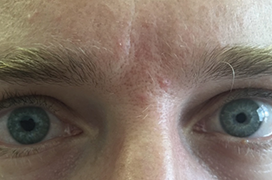The aim of the work is to approach the examination of the pupil with a focus on anisocoria, its characteristics and approach to the diagnosis of pupillotonia and Adie's syndrome and its clinical evaluation. Pupil function is important not only in neurophthalmological examination but also in general ophthalmological examination. First of all, we need to know how the reflex arc works in order to be able to exclude or confirm whether the parasympathetic or sympathetic is affected. It is also necessary to know the exact characteristics of the pupil, such as size, shape, placement, function and reaction to light and at close range. Only on this basis can we distinguish pathological features. We do not often encounter this diagnosis, but it is necessary to keep it in mind, especially in the field of neurophthalmology but also in general ophthalmology. We also present three cases of pupilotonia and Adie's syndrome, which we diagnosed at the Department of Ophthalmology, Faculty of Medicine, Comenius University, after the patient himself came by emergency admission or was sent directly to ophthalmology clinic. In the discussion, we present various other diagnoses, where the reflex arc may not be affected, but the pathological pupil is caused by intraocular tumors, general systemic diseases and, last but not least, local therapy or alkaloids.
- Carotid-Cavernous Fistula from the Perspective of an Ophthalmologist. A Review
- Presbyopia Management with Diffractive Phakic Posterior Chamber IOL
- Highlights of Hypertensive and Normotensive Glaucoma
- Highlights of Advances in Medical Retina from the Virtual World Ophthalmology Congress 2020
- Pupillotonia and Adie Syndrome
- Transscleral Diode Cyclophotocoagulation in Treatment of Glaucoma

